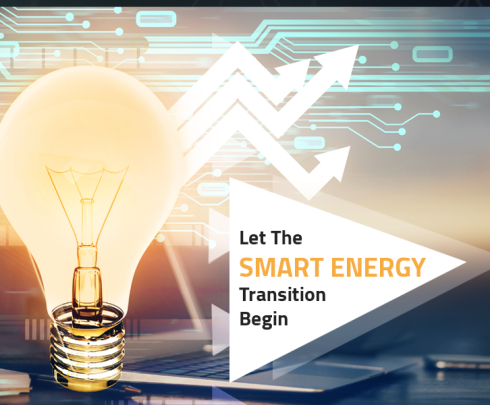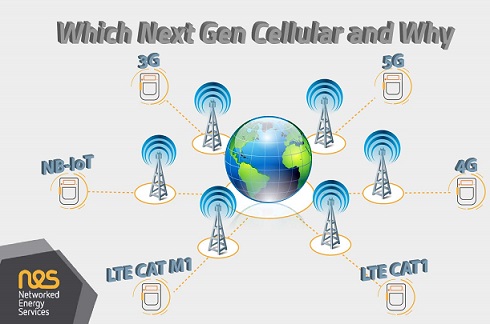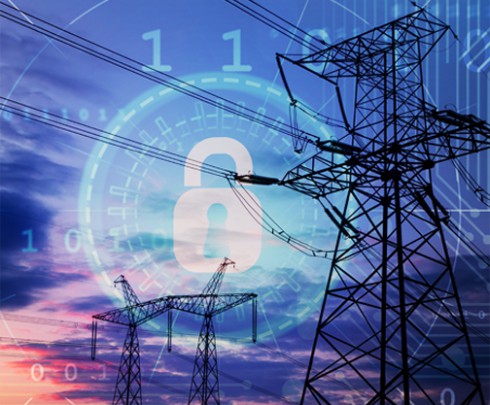
Getting ready to operate the smarter grid: How Smart Grid Operations, aligned to ITIL, can enable the Smart Energy Transition
Sep 25, 2019This has happened before
Other industries have gone through a similar transition.
Only 30 years ago, the telecoms network looked just like the traditional pre-smart-grid with technology in the centre and passive “dumb” equipment in the field and the consumer premise.
All that changed with the introduction of Digital Subscriber Line (DSL) and then (a few years later) with the smart-phone – suddenly, the sophistication of equipment in the field and the consumer’s premise (and the consumer’s hand) increased dramatically and started to look more like IT resources than telecoms equipment.
Today, a typical telecoms service provides a DSL (or cable or satellite) modem, a router, a smart phone, often together with broadcast and on-demand TV, in-built value-added services delivered to these end-points, connections to highly sophisticated equipment in the exchange/head-end/base-station, and a number of back-end services hosted by IT infrastructure either at the exchange/head-end/base-station or potentially anywhere, including the cloud. Communications are bi-directional and services can be provided by IT close to what was traditionally the edge of the network. Whilst dedicated telecommunications equipment remains, it is largely software enabled, and most of the high-value services are provided by software solutions.
Processes for the operational management of this technology needed to change to support these new types of resource and service delivery supply-chains. The result, being implemented today, is a set of standards derived from a convergence of TMF eTOM (processes dedicated to the management of telecoms infrastructures) and ITIL (the IT Information Library) which is a process set for the operations of IT infrastructure. It is this practical blending of telecommunications requirements with IT requirements which has let to this successful outcome.
OT and IT Convergence
This change in the telecoms industry is not isolated.
There is a wider trend of convergence amongst Operational Technology (the tools and systems which execute an organisations operations) and Information Technology. The drivers are very similar – initially, operational assets were not very intelligent or “open” in terms of their manageability, and so proprietary tooling was required to manage them, often labelled SCADA. As infrastructure embeds more IT-like characteristics and starts to follow more “open” management, communications and security protocols, there is a natural convergence.
Consider a fleet of trucks as an operational asset of a haulier. A decade ago, these were counted in and out at the depot with a mileage and tachometer check at the end of each day. Now, the truck has GPS, real-time telemetry, and all sorts of driver aids; all driven by software, configuration, reference data (e.g. digital maps and traffic information) which is automatically updated. And the materials in the truck all have RFID so they can be logged into an asset management system via scanning.
And that is just trucks and haulage – imagine the convergence possibilities for a technology area which is actively trying to be smarter.
Applying IT management concepts to the Smart Grid
ITIL can benefit the Smart Grid, when used in conjunction with specific Smart Grid aligned operational processes.
It is grouped into five main process areas – Strategy, Design, Transition, Operation and Continual Improvement. Although developed for the IT industry, it is easy to see how these can become relevant to the Smart Grid as it evolves to contain more and more IT resources.
Not all elements of ITIL are directly or immediately relevant to a DSO’s Smart Grid operations, and all should be blended with those operational processes which are specific to the Smart Grid.
But, that is OK. ITIL is designed so that it can be applied gradually to an organisation, with a focus on those specific outcomes the organisation wishes to achieve. For a DSO operations team, the focus would be on Design, Transition and Operation, with Strategy and Continual Improvement being part of the surrounding organisational context for the DSO operations team.
So, as the focus on business and regulatory KPIs for the ops team increases and more IT is deployed towards the edge and towards the consumer, the following ITIL elements will become important, blended into the Smart Grid operational processes and driven by distinct business outcomes.
Keeping the Smart Grid specifics; recognising the differences
Keeping those operational processes which are specific to the Smart Grid is important. In telecoms, the outcome was a blend of two standards eTOM, from the TMF, and ITIL. So should the same approach be provided for Smart Grids.
This is particularly important in security; the Smart Grid has specific threats, vulnerabilities and temptations to the cyber-criminal which are unique to it. Whilst IT security practices can form a template, they do not provide directly applicable solutions. This is one area where the Smart Grid operations teams need to consider carefully – who will attack me, what is their motivation, what parts of the infrastructure will they attack, how will I identify the threat, how will I recognise an attack, how will I know it is successful, how will I respond to it. Answers to these questions can’t be lifted from an IT manual and applied to Smart Grid operations – they are unique to Smart Grid.
Making practical use of this
Right now, Smart Grids are being deployed, and the focus is on rollout and business case realisation. But, soon, the operational efficiency will become more significant, as it becomes more widely recognised that this is an influencer on many of the business and regulatory KPIs upon which the business case is based – specifically, customer experience, reputation, op-ex, cap-ex, revenue leakage reduction and security. The increasingly dynamic nature of the smart grid will need to be managed to meet the demands of the smart energy transition.
Like in the telecoms example, the operational requirements associated directly with a Smart Grid will be combined with a more general appreciation of operating an IT infrastructure, especially in the area of security. At this stage, a new class of operational tools will be required which implement ITIL aligned processes in conjunction with the specific process and technology requirements of the Smart Grid.
Such tools are in development today, in readiness for the point when the IT in the Smart Grid dominates over the physical infrastructure.
A real solution
Networked Energy Services (NES) is a leading developer of smart grid technology. It is investing in a new suite of solutions which are already blending key ITIL concepts with Smart Grid operations to ensure that the Smart Grid can be efficiently operated as the increased embedded IT makes it Smarter. Furthermore, its suite includes new security solutions which are targeted at the specific challenges which are inherent in securing a Smart Grid environment. Currently, NES has deployed its operational management solutions for over 1M meters in Americas, Europe and Middle-east. Its largest deployments are managing many 100K meters.
….For matured markets
The days of using data-centric solutions to meet operational needs, through expensive and bespoke customisation are drawing to a close. As agility and operational process specialisation becomes more important, tools which can be quickly deployed and provide in-built best-practice for operating IT-aligned grid infrastructure will become relevant. Increased focus on the security of the Smart Grid will drive the importance of dedicated security operations tools with in-built knowledge of how cyber-criminals will try to exploit the Smart Grid.
….For emerging markets
Although the focus is often on a rollout and achievement of the first generation of business benefits, the need to maintain the infrastructure in a mode that enables high-performance is increasingly in focus. This is driven the need for operational tools which guide the DSO through the extension of operational processes. From a security perspective, emerging markets often represent an “easy target” – although financial drivers for attack may not be present, the incentive to disrupt social energy schemes and government and NGO sponsored initiatives is very tempting.
….Proven consolidation through standards compliance
NES solution is designed to support any OSGP Smart Grid deployment. In fact, in one deployment, of over 400K meters, NES solutions are managing 3 OSGP vendors, with initiatives to introduce more OSGP vendors into that same network over the next few years.














